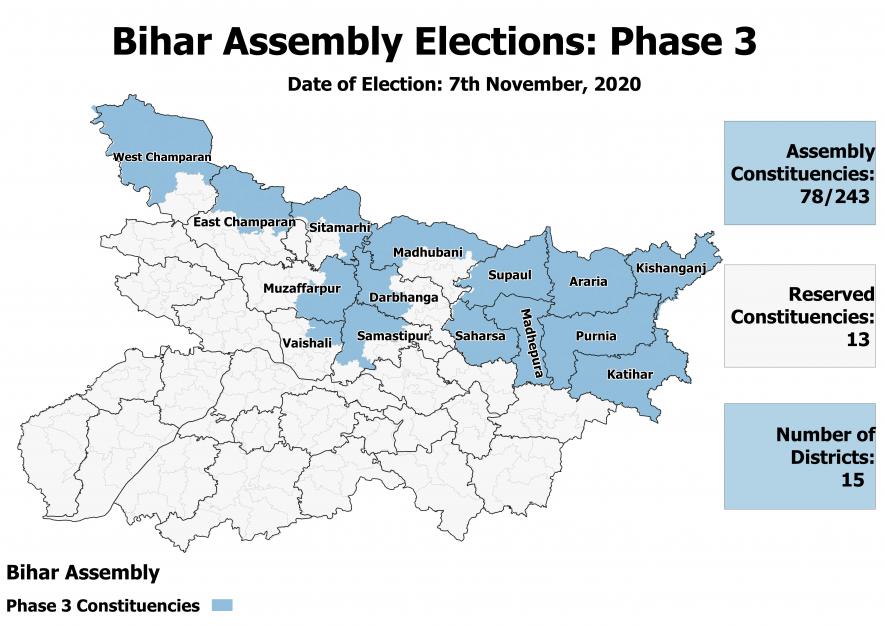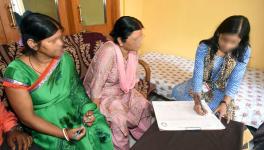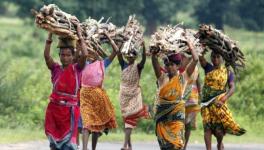Bihar Elections: Resurgent Grand Alliance Has Advantage in Phase 3
Bihar’s Assembly election enters its last phase on November 7, when people in 78 seats spread over 15 districts will cast their votes. Among these are 13 seats reserved for Scheduled Castes. This northern belt, bordering Nepal, stretches from West Champaran in the west to Katihar, Purnea and Kishanganj districts in the east along the West Bengal border. It includes the historic regions of Mithila and Seemanchal as well as the site of Mahatma Gandhi’s famous Champaran Satyagraha in 1917 raising the demands of indigo farmers.
The intense feudal exploitation that permeated the region and lives of peasantry has been brilliantly captured by two literary stalwarts who were born and lived here, and wrote about it – Phanishwar Nath Renu (‘Maila Aanchal’ and others) and Baba Nagarjun (‘Balchanma’ and others).

This densely populated swathe, with over two crore voters registered for this election, is largely rural with only 11 urban and nine semi-urban constituencies, with the remaining 58 seats all rural. Besides the staple wheat and paddy, the region also produces most of the maize and sugarcane in Bihar. Farmers of both these crops have long suffered from distressingly low prices they get from sugar mills or big companies that buy up maize.
This belt also has the largest number of seats with a sizeable Muslim population compared with the earlier two phases. There are 25 such seats in this round compared with 17 in phase 2, and 10 in phase 1.
Electoral Calculus
In the last Assembly election held in 2015, when Nitish Kumar’s Janata Dal United (JD-U) was aligned with Lalu Yadav’s Rashtriya Janata Dal (RJD) and Congress in a grand alliance, they had swept the region cornering 55 seats (RJD 20; JD-U 23; Congress 11; Rashtriya Lok Samta Party 1) with the Bharatiya Janata Party (BJP) left with just 20 and the rest going to others. Later, Nitish Kumar deserted the alliance and joined hands with BJP in 2017.
This time the alignments are different – BJP is aligned with JD-U, as well as Jitanram Manjhi-led HAMS (Hindustani Awam Morcha –Secular) while the Grand Alliance or Mahagathbandhan (MGB) today comprises old allies RJD and Congress with the whole Left bloc added. Though the Left is a relatively small force, its strong presence in some pockets as well as a dedicated corp of activists has considerably strengthened the MGB.
BJP is contesting on 35 seats while JD-U is in the fray in 37. Their junior partners, HAMS and Vikaassheel Insaan Party or VIP are contesting on one and five seats, respectively. On the other side, from MGB, the RJD is contesting from 46 seats and Congress from 25, with the Left fighting in the seven remaining seats.
As in the earlier two phases, Lok Janshakti Party (LJP), led by the late Ram Vilas Paswan’s son Chirag Paswan, is contesting on 41 seats, which include 35 seats where JD-U is in the fray. LJP has not put up any candidates against BJP anywhere, including in these phase 3 seats.
It is possible that LJP will dent the sinking JD-U even further, but then, that will damage the total numbers for the whole BJP alliance. This quagmire – a creation of the BJP, some believe – has left the National Democratic Alliance (NDA) partners reeling, though people don’t seem to be as bemused, probably because their mind is already made up to on throwing out the unpopular Nitish Kumar government.
In this phase, another alliance – the Grand Democratic Secular Front - of minor parties may acquire its 15 minutes of fame because of its specific composition. The constituents are: All India Majlis-e-Ittehadul Musalmeen (AIMIM), RLSP, Bahujan Samaj Party (BSP), Samajwadi Janata Dal (Democratic), Janwadi Party and Suheldev Bhartiya Samaj Party. They claim to represent Muslims and various castes, including the dalits. Although presence of this front is tiny, in Seemanchal (north-eastern Bihar) sections of the Muslim community may opt for this Grand Democratic Secular Front, its constituents hope.
Analysts believe that the net effect of this front may be to wean away some voters from the MGB, thus strengthening the ruling alliance’s position. There have been persistent though unsubstantiated rumours that both this Front and LJP are being propped up by BJP which is trying to a) win the election; and b) trying to establish itself as the bigger party vis-a-vis the JD-U.
BJP-JDU Alliance Has Almost Given Up
But, as the campaign in Bihar has revealed, and again confirmed in this third phase, there has been a groundswell of anger at the incumbent BJP-JDU government for its numerous failings, including its failure to address distress of farmers, its mishandling of the pandemic, its inability to effectively tackle floods (that effect this third phase region most devastatingly) and most of all, its failure to address raging unemployment.
Due to this, the opposition MGB has emerged as a viable alternative, pushing the ruling BJP-JDU alliance into the corner. Such has been the tide of support for the MGB and the anger with Nitish Kumar’s leadership that he was forced to make the last throw of dice by declaring that this would be his ‘last election’ – an admission of defeat, though with a hidden desire to garner some sort of sympathy vote.
One direct consequence of this anger and discontent is that caste and community barriers have crumbled, with the desire to see the last of this unpopular dispensation cutting across conventional caste calculations. This is something that periodically happens, but despite that, is never acknowledged by either election experts or the media. As a result, the last phase of polling may well seal the fate of the BJP-JDU government and become its valedictory occasion.
Get the latest reports & analysis with people's perspective on Protests, movements & deep analytical videos, discussions of the current affairs in your Telegram app. Subscribe to NewsClick's Telegram channel & get Real-Time updates on stories, as they get published on our website.























